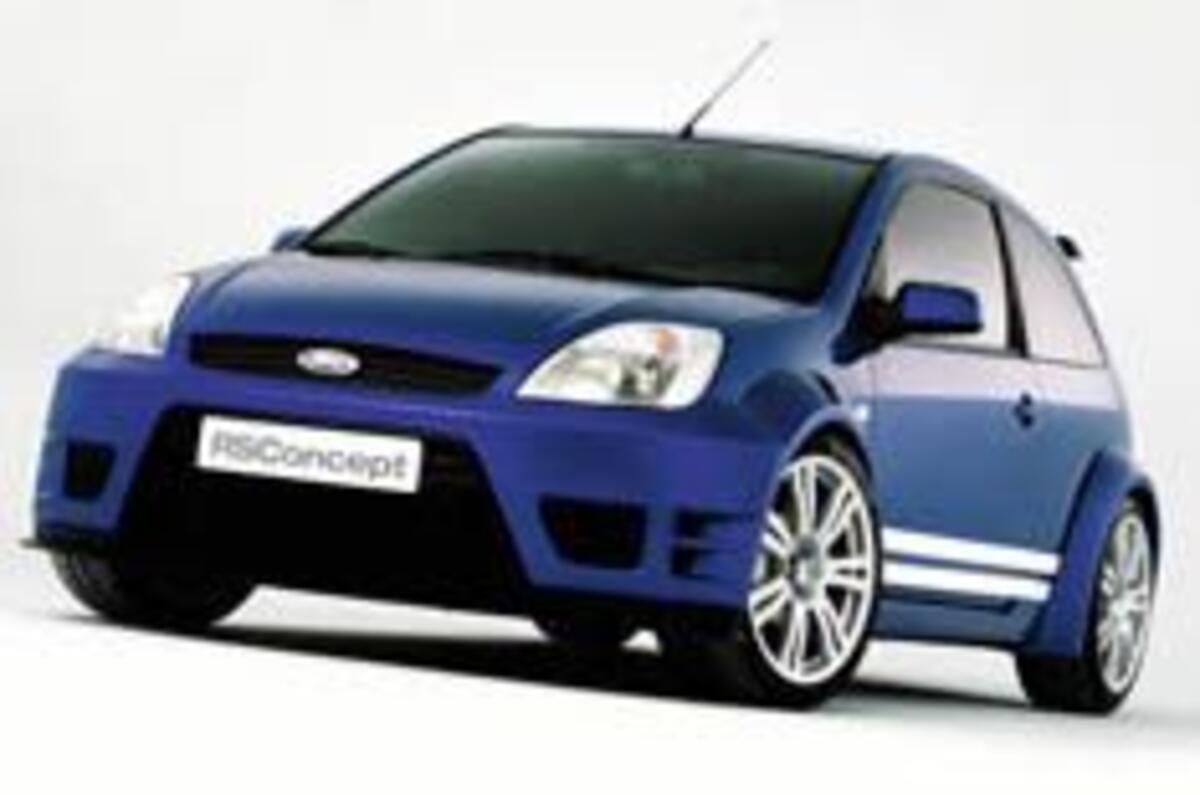Ford sprung one of the biggest surprises at this year’s Geneva show: a red-hot Fiesta RS. The Blue Oval hopes to repeat the success of the hottest Focus with its second Rallye Sport model in as many years.
Although dubbed a concept, the Fiesta RS you see here will barely change when it arrives in showrooms in less than two years’ time. Ford claims that nothing on the show car is unfeasible for production and Team RS director Jost Capito told Autocar: ‘This is not a way-out-there concept car. It can be very similar in production form.’
Powering the RS will be a tuned version of the 2.0-litre Duratec HE four-cylinder engine that sees service in the Mondeo and will be shared with the 148bhp Fiesta ST warm hatch, which was also unveiled at Geneva.
In the Fiesta RS, it will breathe naturally rather than by the forced induction of the turbo Focus RS. At this stage, Ford will only say that power will be ‘in excess of 180bhp’: our sources suggest the final figure will be between 190 and 200bhp.
Capito said: ‘Why no turbo? We wanted to keep the RS insurable and costs down. Besides, we can do a lot with a 2.0-litre engine in a B-segment car without needing a turbo. Don’t forget the Focus RS isn’t as powerful as some rivals – it’s about how it drives as much as how it goes in a straight line.’
However, Capito went on to explain that the cooling package was designed to accommodate a turbocharger – a hint that a blown version could be offered by aftermarket tuners, or a possible Cosworth range-topper. Hence the dominating front air scoops are functional, not just for show.
Boasting performance figures years in advance of a car’s launch is a dangerous game – just ask Bugatti – so Ford is keeping it vague at this stage, preferring to quote a 0-60mph target of ‘around 7.0sec’.
With a power output not much higher than the latest Renault Clio 182 (180bhp; 0-60mph 7.1sec), Ford is concentrating on making the RS the best-handling hot supermini on sale. The track is wider front and rear, giving the hottest Fiesta a squat stance, enhanced by the 18-inch alloy wheels and specially developed Pirelli P-Zero Nero 235/40 tyres in the swollen wheelarches. The beefed-up brakes are carried over from the ST model.
Suspension layout is identical to the standard Fiesta’s. ‘The Fiesta is such a stiff car to start with we haven’t added any extra strength,’ said project leader Nick Collins. The ride height is lower, springs and dampers are uprated and the steering ratio is modified.
The Fiesta RS remains a front-wheel-drive car and Team RS are considering whether to fit a trick front differential like the Quaife item on the Focus. This seems unlikely, however, bearing in mind the lower power output and target cost of the Fiesta.
The styling is inspired by Ford’s 2002 Rallye concept, all the way down to the shape of the distinctive cooling vents, deep sideskirts, rear spoiler, white ceramic-coated brake callipers and exhaust tips. And the Performance Blue paint is identical to the colour of the Focus RS, heightened this time by twin horizontal white stripes along the flanks.
Step inside the RS concept and it is similar to its bigger Focus brother: figure-hugging suede and leather sports seats, a small Momo wheel and little in the way of ostentation. Ford is targeting young buyers and an affordable insurance grouping, predicting an E rating thanks to lower crash repair costs and a category one alarm. Although the Fiesta RS’s price has not yet been disclosed, Capito predicted a similar premium as for the Focus RS over the Focus ST170. That would suggest that the Fiesta performance twins will cost around £12,500 (ST, on sale November 2004) and £15,500 (RS, early 2006).
One thing is for sure: Ford bitterly remembers the delays that struck the Focus RS and vows it will not let it happen again. ‘We’re fully aware of the performance expectations for this type of vehicle and what our customers expect,’ said Capito. ‘As we fine-tune the concept, we’ll make sure we don’t disappoint them.’




Add your comment